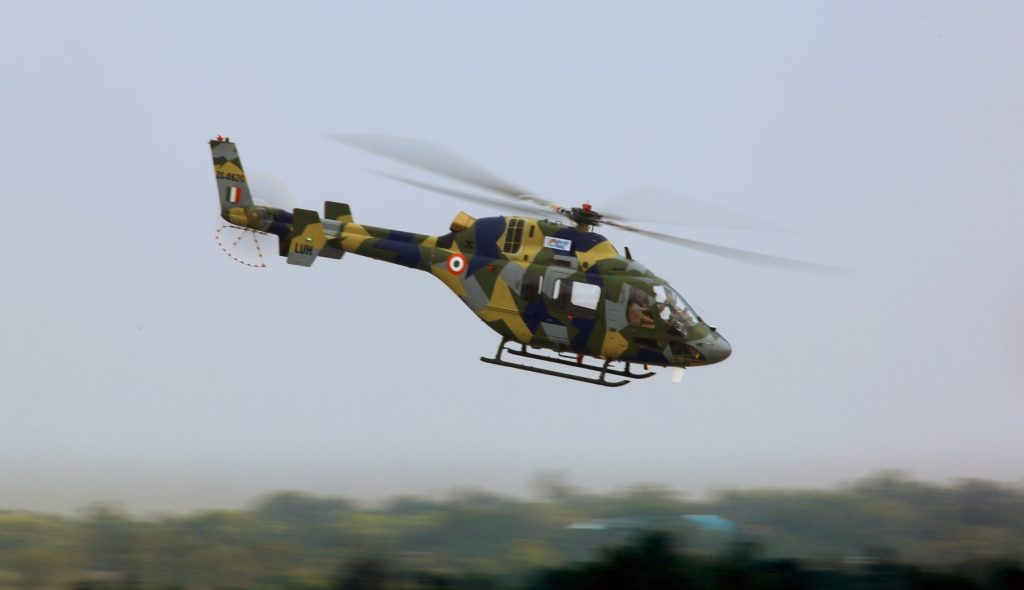Crucial Meeting Set to Decide Future of India’s Light Utility Helicopter (LUH) Program
India’s Light Utility Helicopter (LUH) program is approaching a pivotal moment, with a high-level meeting scheduled at Army Headquarters on February 28 expected to determine the path forward. Developed by Hindustan Aeronautics Limited (HAL) as a modern replacement for the aging Cheetah and Chetak fleets, the LUH is facing renewed scrutiny and mounting challenges despite nearing operational readiness.
At the Aero India 2025 show in Bengaluru, the LUH was prominently featured in both air displays and VIP demonstrations. However, sources indicate that Army Chief General Upendra Dwivedi and Northern Command Chief Lt Gen M. V. Suchindra Kumar refrained from flying in the LUH due to safety protocols associated with single-engine helicopters. In contrast, IAF Chief Air Chief Marshal A.P. Singh not only flew in the LUH but also piloted the Army Chief in a Tejas fighter during the event—signaling the Air Force’s growing confidence in India’s indigenous aerospace platforms.
The LUH program’s momentum has been affected by the recent grounding of over 300 HAL-built ALH Dhruv helicopters across the Indian armed forces following a fatal crash in Gujarat on January 5. HAL is reportedly putting full effort into the ALH crash investigation, addressing safety concerns that also impact the LUH, given the shared systems and components between the two platforms.
Competition from Airbus and Renewed Russian Interest
The pause in the LUH’s progress has created an opening for international competitors. Airbus, a long-time player in India’s light helicopter segment, is stepping up efforts to promote its H125M helicopter—formerly the Eurocopter Fennec. Indian Army Chief Gen. Dwivedi recently visited Airbus’s Marseille facility, where he was briefed on the H125M. This visit followed the July 2024 announcement of a Tata-Airbus partnership to assemble the H125 in India.
A post by the Indian Army accompanying images of the visit noted the commitment to "leveraging global aerospace innovations" to boost operational readiness—raising questions about HAL's position, given that the LUH has been considered near-ready for induction.
India’s requirement includes 187 LUHs and nearly 200 more helicopters to be procured via a foreign partner. While the LUH is expected to fulfill the first batch, the foreign-supplied fleet remains undecided—keeping the competition alive.
Adding further complexity, the long-dormant Russian Kamov Ka-226T program may be making a comeback. Initially chosen in 2015 to fulfill India’s reconnaissance and surveillance helicopter (RSH) requirement, the Ka-226T project had been shelved following failed joint venture negotiations. However, after Defence Minister Rajnath Singh’s December 2024 visit to Moscow, the project is reportedly back under discussion, potentially challenging HAL’s LUH for future orders.
Chartering Civil Helicopters & New Procurement Dynamics
The delay in the LUH program has prompted alternative strategies. The Indian Army’s Northern Command has begun chartering civilian helicopters for logistics support—a move that reflects growing flexibility in procurement methods and possibly reduces the urgency to induct LUHs in the immediate term.
While HAL remains optimistic about resolving trial-related issues—particularly minor vibration problems—it has lost valuable time. The company believes these concerns can be addressed within the next few months, but confidence among military stakeholders must be rebuilt. The upcoming internal Army meeting is expected to determine how soon and how many LUHs will move toward operational induction.
LUH: A Strategic and Operational Opportunity
Despite the hurdles, HAL’s LUH continues to represent a vital opportunity for India’s military aviation. Purpose-built for high-altitude operations in areas such as Siachen and Ladakh, the LUH features a Shakti-1U engine and lightweight frame, making it capable of flying above 6,000 meters—conditions where most foreign helicopters struggle.
Its role in reconnaissance, logistics, and casualty evacuation is critical in remote and rugged terrains. Continued delays in LUH procurement risk prolonging reliance on aging Cheetah and Chetak helicopters, which are increasingly expensive to maintain and no longer meet modern performance standards.
Accelerating the LUH’s induction not only fulfills immediate operational needs but also aligns with India’s long-term goals of defence self-reliance. The LUH’s indigenous design allows for complete control over maintenance, parts, upgrades, and future development—reducing import dependency and supporting the country’s domestic aerospace ecosystem.
A full-scale commitment to the LUH program would boost local manufacturing, create skilled jobs, and position India as a competitive exporter of light utility helicopters. More importantly, it would secure a reliable, mission-capable platform tailored to India’s unique geographic and tactical demands.
What Lies Ahead
The next few months will be critical for HAL. Successful resolution of technical issues and clear communication with military leadership could cement the LUH’s place as the backbone of India’s light helicopter fleet. Failure to act decisively may allow international alternatives to gain ground, once again delaying India’s self-reliance goals in military aviation.
Written by Defence Expert


Post a Comment